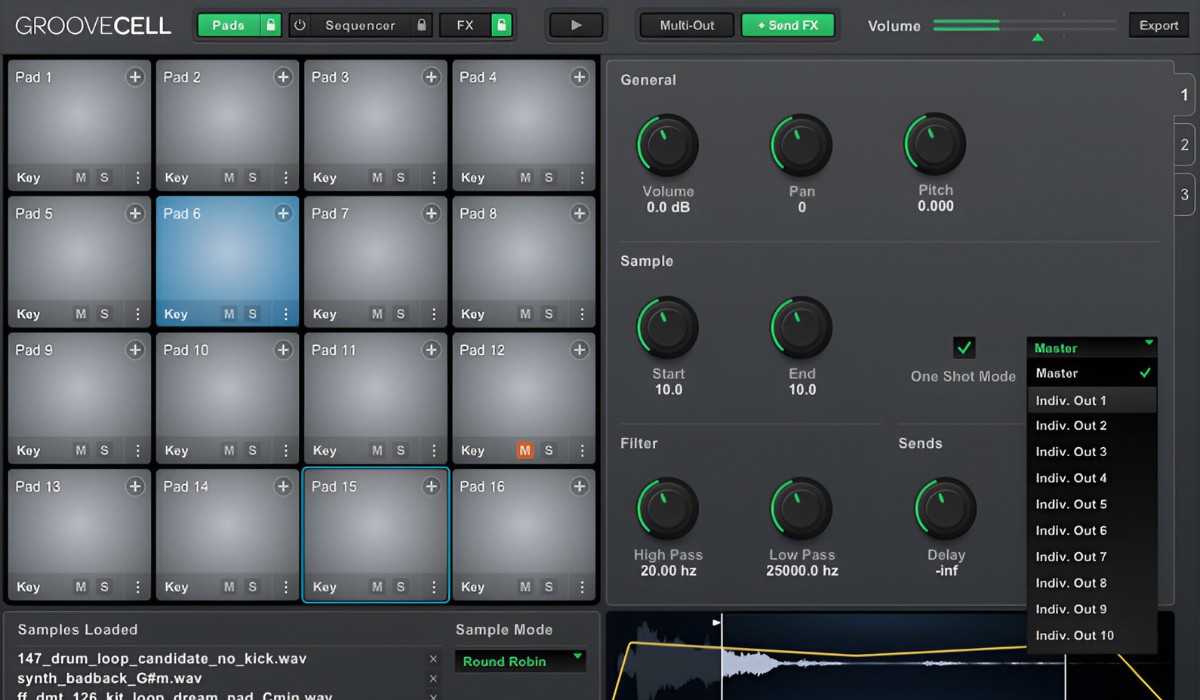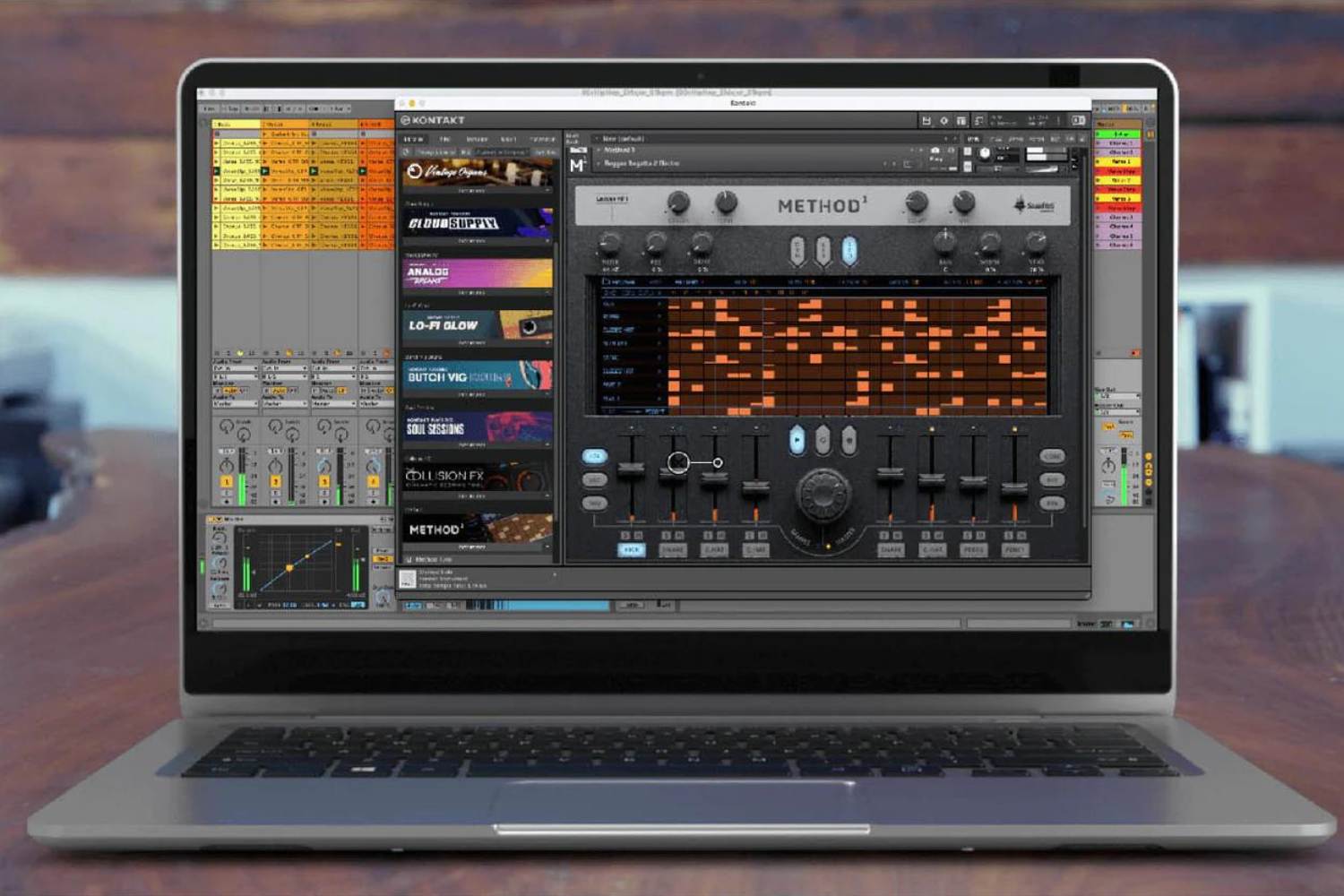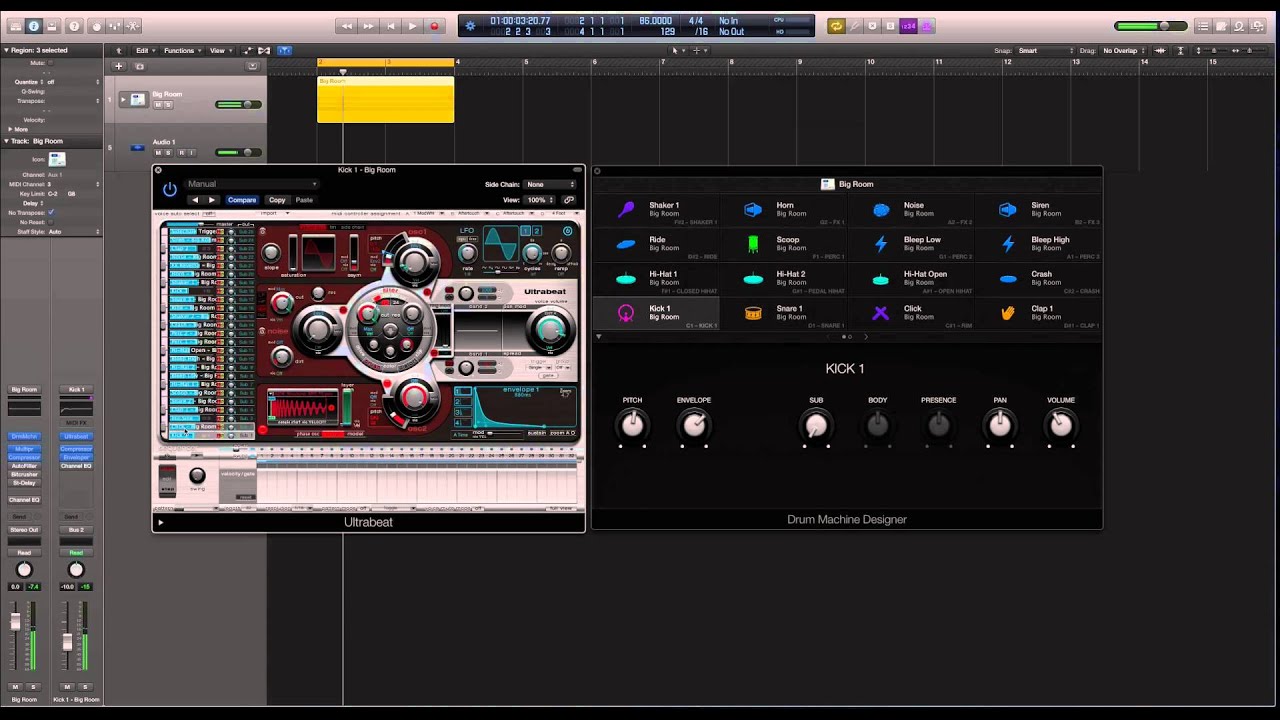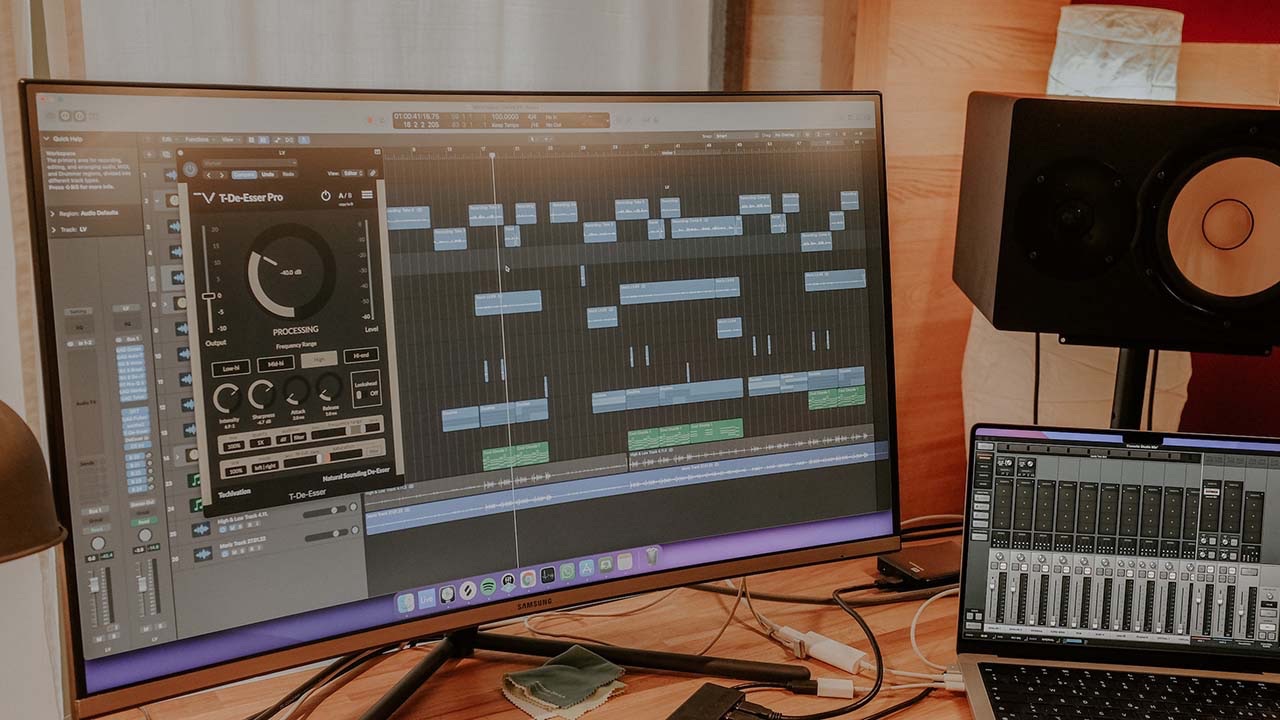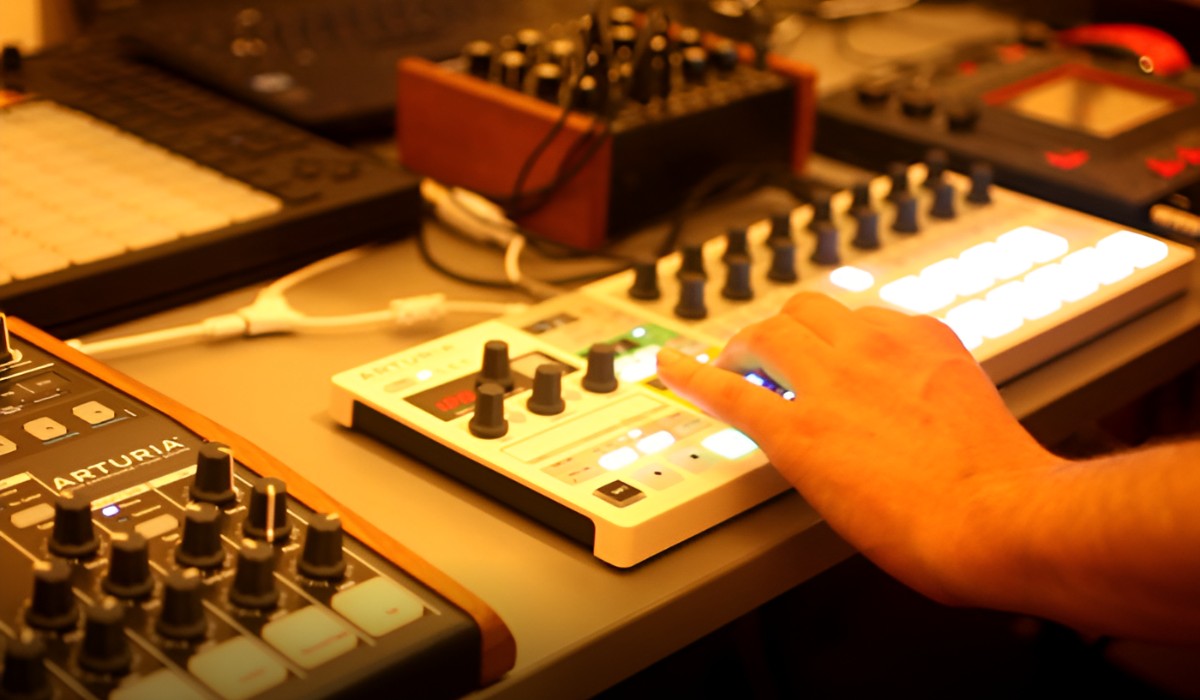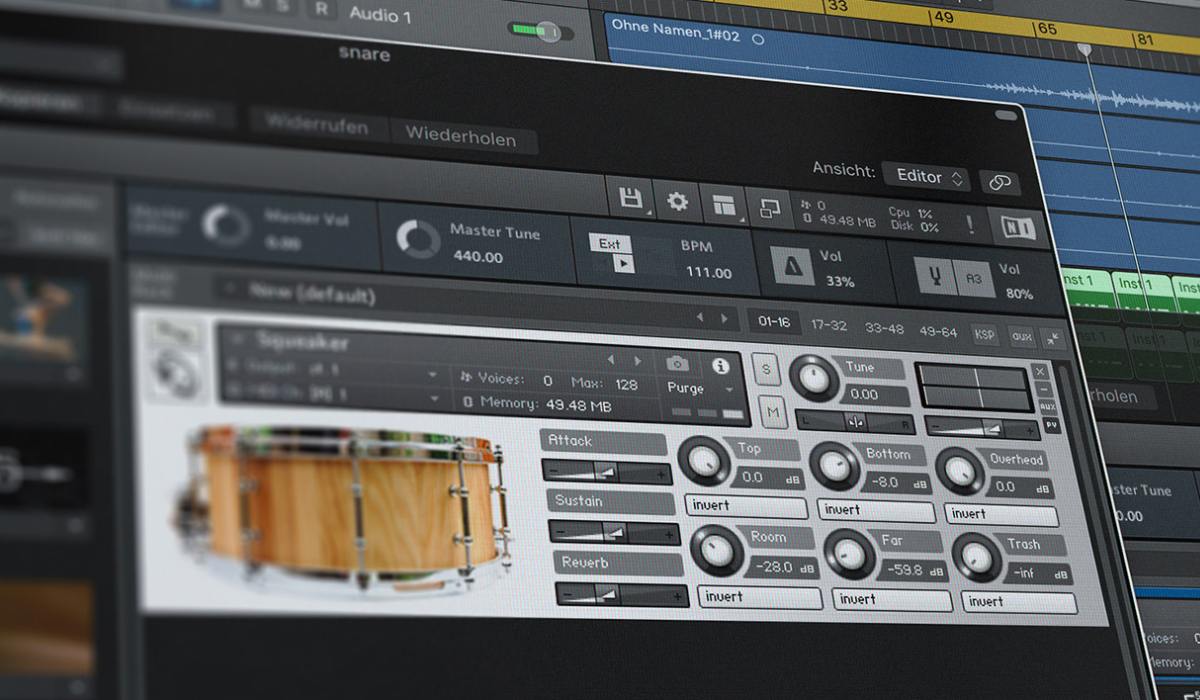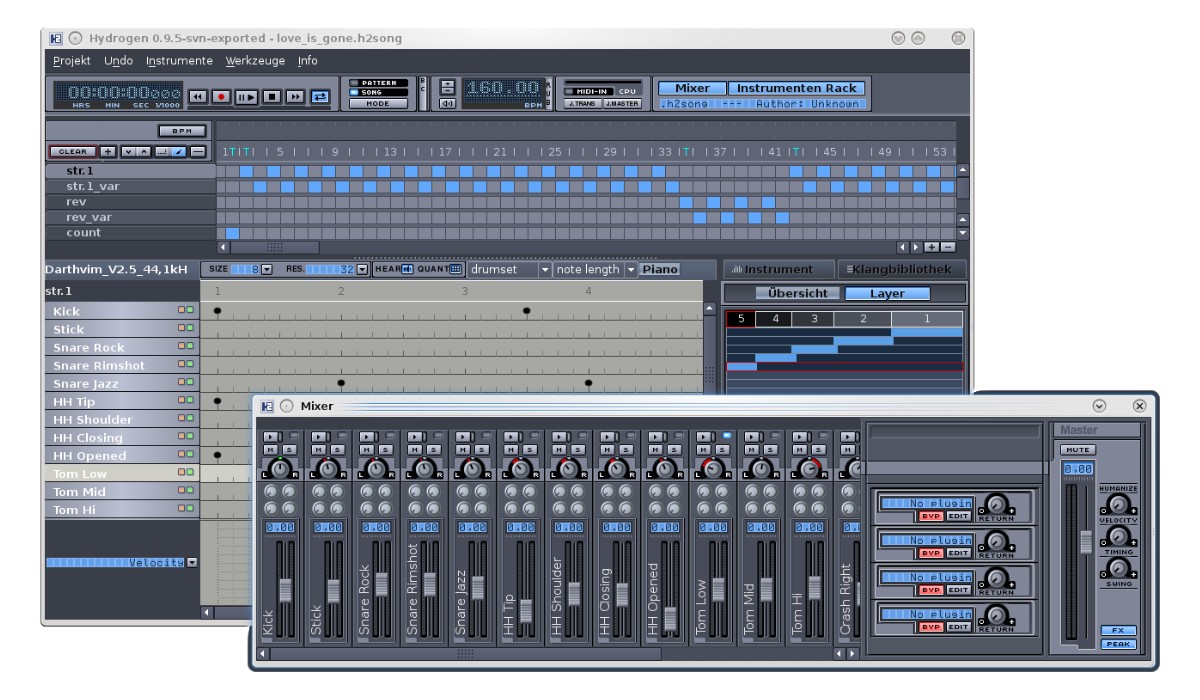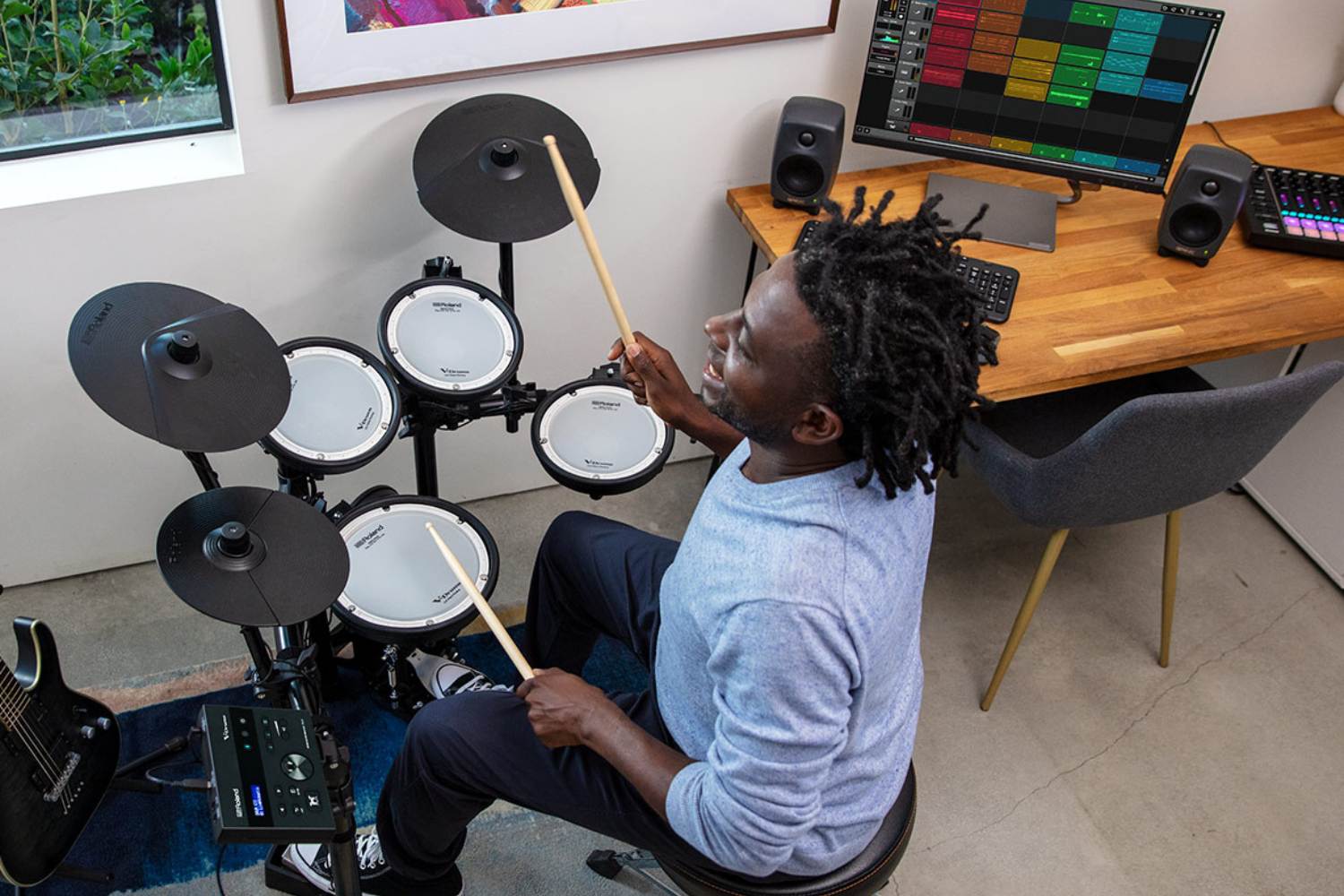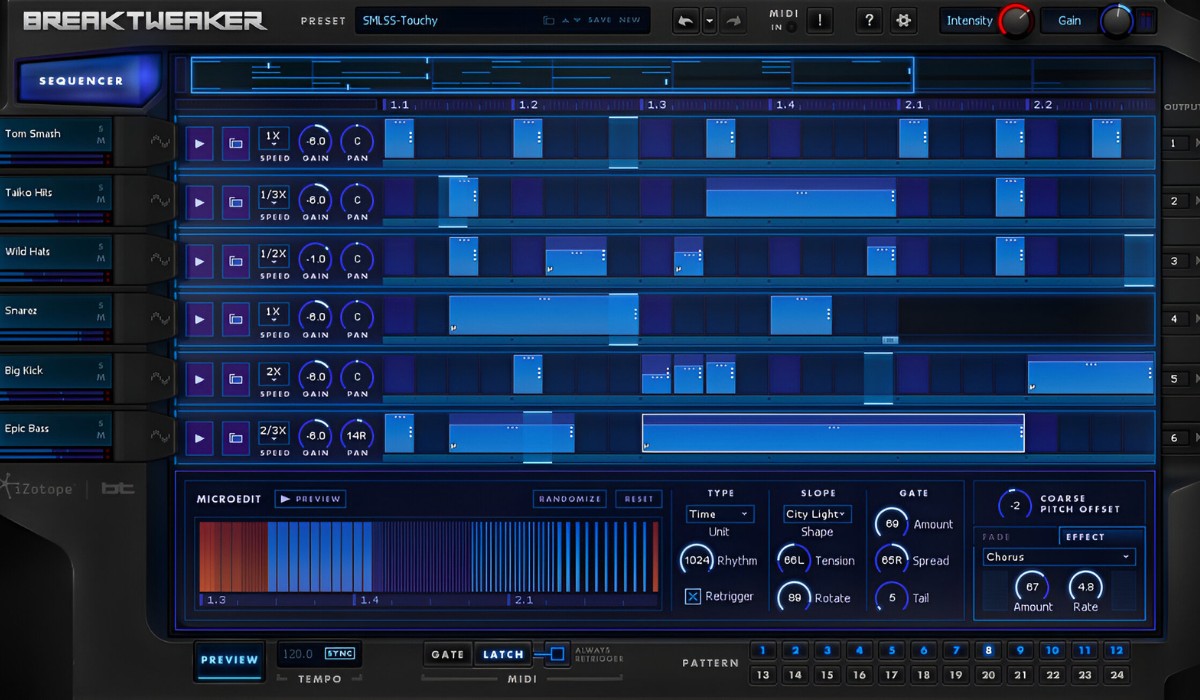Introduction
Welcome to the exciting world of music production with Pro Tools! If you're looking to add dynamic, rhythmic elements to your compositions, a drum machine is an invaluable tool. In this guide, we'll explore how to seamlessly integrate a drum machine into your Pro Tools workflow, allowing you to create captivating drum patterns and beats with ease.
Whether you're a seasoned music producer or just starting your journey, understanding how to use a drum machine in Pro Tools can elevate your sound to new heights. With its intuitive interface and powerful capabilities, Pro Tools provides the perfect environment for integrating and controlling a drum machine, giving you the freedom to experiment and craft unique rhythms for your music.
In this comprehensive tutorial, we'll cover everything from setting up your drum machine and connecting it to Pro Tools, to creating MIDI tracks, programming drum patterns, and utilizing drum machine plugins. Additionally, we'll delve into the process of adding effects to your drum machine and provide valuable tips to enhance your drum programming skills.
By the end of this guide, you'll have a solid grasp of how to effectively harness the potential of a drum machine within the Pro Tools environment, enabling you to infuse your music with compelling and dynamic percussion elements. So, let's dive in and unlock the boundless creativity that comes with integrating a drum machine into Pro Tools!
Setting Up Your Drum Machine
Before embarking on your rhythmic journey, it’s essential to ensure that your drum machine is correctly set up and ready to sync with Pro Tools. Start by positioning your drum machine in a convenient location within your studio setup, allowing for easy access and seamless integration with your music production workflow.
Ensure that your drum machine is powered on and connected to a reliable power source. Depending on your drum machine model, you may need to connect it to an audio interface or directly to your computer using USB or MIDI cables. It’s crucial to consult the user manual for your specific drum machine to understand the appropriate connectivity options and settings.
Once your drum machine is powered and connected, familiarize yourself with its interface and controls. Understanding the layout and functionality of your drum machine will significantly streamline the integration process with Pro Tools, enabling you to navigate its features effortlessly.
If your drum machine offers the flexibility of customizing drum kits and sound parameters, take the time to explore and configure these settings according to your creative preferences. This customization can be instrumental in shaping the sonic character of your drum patterns and beats, allowing you to tailor the sound to complement your musical vision.
Additionally, consider integrating your drum machine with a MIDI controller if you prefer tactile input for triggering drum sounds and patterns. Many drum machines support MIDI input, enabling you to enhance your performance and programming capabilities through the expressive control offered by a MIDI controller.
By meticulously setting up your drum machine and familiarizing yourself with its features, you’ll establish a solid foundation for seamlessly incorporating it into your Pro Tools environment. This preparation ensures that you can focus on the creative aspects of drum programming and production, knowing that your drum machine is optimally configured and ready to inspire your musical endeavors.
Connecting Your Drum Machine to Pro Tools
Once your drum machine is set up and primed for integration, the next crucial step is to establish a seamless connection between your drum machine and Pro Tools. This connection enables Pro Tools to recognize and communicate with your drum machine, allowing for precise control and synchronization of rhythmic elements within your projects.
Begin by connecting your drum machine to your audio interface or directly to your computer using the appropriate cables. If your drum machine utilizes MIDI connectivity, ensure that the MIDI input and output ports are correctly linked to your audio interface or computer. For USB-equipped drum machines, connect the USB cable to an available port on your computer.
Once the physical connections are in place, launch Pro Tools and navigate to the MIDI settings to configure the input and output settings for your drum machine. Pro Tools provides a user-friendly interface for managing MIDI devices, allowing you to specify the input source from your drum machine and assign the output destination for MIDI signals.
After configuring the MIDI settings in Pro Tools, it’s essential to verify that your drum machine is recognized and communicating effectively with the software. Test the connection by triggering drum sounds or patterns from your drum machine, and ensure that Pro Tools accurately receives and responds to the MIDI input signals.
In some cases, you may need to install specific drivers or software provided by the manufacturer of your drum machine to facilitate seamless integration with Pro Tools. These drivers or software components optimize the compatibility and performance of your drum machine within the Pro Tools environment, ensuring reliable communication and control.
By establishing a robust connection between your drum machine and Pro Tools, you pave the way for a cohesive and productive workflow, empowering you to harness the rhythmic potential of your drum machine within your music production projects. With the technical groundwork laid out, you can now focus on unleashing your creativity and crafting captivating drum patterns with confidence and precision.
Creating a MIDI Track
With your drum machine successfully connected to Pro Tools, the next step is to create a MIDI track that will serve as the conduit for transmitting MIDI data between Pro Tools and your drum machine. MIDI tracks in Pro Tools provide a versatile platform for programming and controlling external MIDI devices, making them an essential component of integrating a drum machine into your projects.
To create a MIDI track in Pro Tools, navigate to the track creation interface and select “New Track.” Choose the MIDI track option, and designate the input source as your connected drum machine. This configuration ensures that MIDI data generated within the MIDI track will be routed to your drum machine, allowing you to trigger drum sounds and patterns from Pro Tools.
Once the MIDI track is created and configured, you can begin programming drum patterns and sequences directly within Pro Tools. Pro Tools offers a comprehensive MIDI editing environment, empowering you to input, edit, and manipulate MIDI data with precision and flexibility.
When programming drum patterns on the MIDI track, consider leveraging Pro Tools’ grid and quantization features to align your rhythmic elements with precision. This functionality enables you to quantize MIDI notes to the desired rhythmic grid, ensuring that your drum patterns maintain a tight and cohesive groove.
Furthermore, Pro Tools provides a range of MIDI editing tools and functionalities, such as velocity adjustments, note length modifications, and MIDI event manipulation, allowing you to sculpt and refine your drum patterns with expressive detail.
As you delve into the realm of MIDI track creation and programming in Pro Tools, explore the creative possibilities offered by MIDI automation. By automating MIDI parameters, such as drum machine sound parameters, effects, and modulation, you can infuse your drum patterns with dynamic movement and sonic evolution, adding depth and character to your rhythmic compositions.
By mastering the art of creating MIDI tracks in Pro Tools and harnessing the extensive MIDI editing capabilities at your disposal, you’ll unlock the potential to craft intricate and compelling drum patterns that seamlessly integrate with your musical productions. This foundational skill set forms the cornerstone of leveraging a drum machine within the Pro Tools environment, empowering you to sculpt rhythmic landscapes that elevate your music to new heights.
Programming Drum Patterns
Once you’ve set up your MIDI track in Pro Tools, it’s time to unleash your creativity by programming captivating drum patterns that breathe life into your music. Pro Tools provides a versatile platform for crafting rhythmic elements, allowing you to experiment with diverse patterns and grooves that complement your compositions.
Begin by selecting the drum sounds or kits on your drum machine that align with the sonic palette of your project. Whether you prefer classic analog drum machine sounds, modern electronic percussion, or acoustic drum emulations, your drum machine offers a rich array of sonic possibilities to explore and integrate into your drum patterns.
With your preferred drum sounds at the ready, utilize the MIDI editor in Pro Tools to input and arrange drum hits, kicks, snares, hi-hats, and percussion elements within the MIDI track. Pro Tools’ piano roll view provides an intuitive interface for visually programming drum patterns, enabling you to sequence rhythmic elements with precision and fluidity.
Experiment with varying rhythmic subdivisions, accents, and ghost notes to infuse your drum patterns with rhythmic complexity and groove. Pro Tools’ grid and quantization features facilitate the alignment of drum hits to the desired rhythmic grid, ensuring that your patterns maintain a cohesive and compelling feel.
Consider incorporating velocity adjustments and humanization techniques to imbue your drum patterns with organic nuances and dynamic expression. By modulating the velocity of individual drum hits, you can introduce subtle variations in intensity and articulation, lending a natural and human-like feel to your programmed rhythms.
Furthermore, Pro Tools’ MIDI editing capabilities empower you to explore intricate drum fills, polyrhythmic layers, and evolving percussion arrangements, allowing you to sculpt rhythmic landscapes that captivate listeners and propel your music forward.
As you delve into the art of programming drum patterns in Pro Tools, embrace experimentation and innovation, harnessing the creative potential of your drum machine to craft rhythmic tapestries that resonate with the essence of your musical vision. With each beat and pattern, you’ll expand your rhythmic repertoire and infuse your compositions with the infectious energy of meticulously crafted drum programming.
Using Drum Machine Plugins
Pro Tools offers a diverse array of drum machine plugins that expand your sonic palette and provide boundless creative possibilities for crafting compelling rhythmic elements within your productions. These plugins, often referred to as virtual instruments or VIs, emulate the sound and functionality of classic and contemporary drum machines, offering a convenient and versatile means of integrating rhythmic textures into your projects.
When using drum machine plugins in Pro Tools, you gain access to an extensive selection of drum kits, percussion sounds, and electronic textures, allowing you to explore a vast spectrum of sonic timbres and rhythmic flavors. Whether you seek the punchy impact of analog drum machines, the crisp precision of sampled acoustic drums, or the futuristic allure of electronic percussion, drum machine plugins in Pro Tools cater to a diverse range of musical styles and genres.
Upon selecting a drum machine plugin within Pro Tools, you can seamlessly access its interface to browse and load preset drum kits, manipulate sound parameters, and program rhythmic patterns directly within the plugin’s environment. This intuitive workflow streamlines the process of sculpting and shaping your drum sounds, enabling you to tailor the sonic character of your rhythms to suit the sonic landscape of your compositions.
Drum machine plugins in Pro Tools often feature comprehensive sequencing and pattern programming capabilities, empowering you to craft intricate and dynamic drum patterns with precision and fluidity. By leveraging the pattern sequencer within the plugin, you can input, edit, and arrange rhythmic elements, exploring diverse rhythms and grooves that seamlessly integrate with your musical arrangements.
Furthermore, many drum machine plugins in Pro Tools offer an extensive array of sound-shaping tools, effects, and modulation parameters, allowing you to sculpt and refine your drum sounds with meticulous detail. From transient shaping and EQ to dynamic processing and spatial effects, these plugins provide a comprehensive sonic toolkit for elevating your drum programming to new heights.
By harnessing the creative potential of drum machine plugins within Pro Tools, you expand your rhythmic palette and infuse your music with expressive and captivating percussion elements. Whether you’re crafting driving dance beats, hypnotic electronic grooves, or evocative acoustic rhythms, drum machine plugins in Pro Tools serve as invaluable companions in your quest to shape compelling and dynamic rhythmic landscapes.
Adding Effects to Your Drum Machine
Enhancing the sonic character and expressive potential of your drum machine within Pro Tools involves the strategic application of effects to elevate your rhythmic elements to new heights. By integrating a diverse array of effects, ranging from dynamic processors and spatial processors to creative modulation tools, you can imbue your drum patterns with depth, impact, and sonic intrigue.
One of the fundamental effects to consider when shaping the sonic identity of your drum machine is compression. Applying dynamic compression to individual drum elements or the overall drum mix can enhance the punch, clarity, and cohesion of your rhythms, ensuring that each drum hit sits within the mix with precision and impact. Pro Tools offers a range of dynamic processors, such as compressors and transient shapers, that enable you to sculpt the dynamics of your drum patterns with finesse.
Spatial effects, including reverb and delay, play a pivotal role in imbuing your drum patterns with immersive ambience and spatial dimension. By judiciously applying reverberation and delay to specific drum elements, you can create a sense of space, depth, and movement within your rhythmic arrangements, adding a captivating sonic dimension that resonates with listeners.
Furthermore, the application of EQ and filtering allows you to shape the tonal characteristics of your drum sounds, sculpting their frequency content to fit seamlessly within the sonic landscape of your music. Pro Tools’ comprehensive EQ and filtering tools provide precise control over the tonal balance and timbral nuances of your drum patterns, enabling you to tailor their sonic identity with surgical precision.
Creative modulation effects, such as chorus, flanger, and phaser, offer a palette of expressive tools for infusing your drum patterns with dynamic movement and textural intrigue. By introducing subtle modulation to specific drum elements, you can impart a sense of animation and liveliness to your rhythms, elevating their sonic impact and engaging the listener’s ear with captivating sonic evolution.
As you integrate effects into your drum machine within Pro Tools, embrace experimentation and sonic exploration, leveraging the diverse range of effects at your disposal to craft drum patterns that resonate with expressive depth and sonic allure. With each effect applied thoughtfully and purposefully, you’ll enrich the rhythmic tapestry of your music, infusing your compositions with the infectious energy of meticulously crafted drum programming.
Tips for Using Drum Machine in Pro Tools
As you delve into the realm of integrating a drum machine into your Pro Tools workflow, consider the following tips to enhance your drum programming prowess and maximize the creative potential of your rhythmic explorations:
- Explore Diverse Drum Machine Sounds: Delve into the expansive sonic palette offered by your drum machine and explore a wide range of drum kits, percussion sounds, and electronic textures. Experiment with different sound libraries and kits to discover unique sonic textures that complement your musical vision.
- Utilize MIDI Mapping for Dynamic Control: Leverage Pro Tools’ MIDI mapping capabilities to assign drum machine parameters, such as sound parameters, effects, and modulation controls, to MIDI controllers or automation, enabling dynamic and expressive control over your drum sounds and patterns.
- Embrace Humanization Techniques: Infuse organic and human-like nuances into your drum patterns by utilizing velocity adjustments, subtle timing variations, and nuanced articulations. Humanization techniques add depth and realism to your programmed rhythms, enhancing their expressive impact.
- Experiment with Polyrhythms and Offbeat Patterns: Venture into the realm of polyrhythmic explorations and offbeat patterns, introducing rhythmic complexity and intrigue into your drum programming. Embrace unconventional rhythmic structures to infuse your music with captivating groove and rhythmic diversity.
- Layer and Blend Drum Machine Sounds: Blend and layer multiple drum machine sounds to create rich and textured drum patterns. Experiment with combining acoustic and electronic elements, blending percussion textures, and layering rhythmic elements to craft dynamic and sonically captivating drum arrangements.
- Integrate Drum Machine Patterns with Live Performance: Seamlessly integrate your drum machine patterns with live performance elements, such as electronic drum pads or MIDI controllers, to infuse your music with the energy and spontaneity of live rhythmic expression. Embrace the fusion of electronic and live performance elements to elevate your drum programming to new heights.
- Customize Drum Machine Sequencing and Swing: Explore the sequencing and swing parameters of your drum machine to introduce groove and swing into your patterns. Customizing the sequencing and swing settings allows you to imbue your drum patterns with rhythmic personality and infectious feel.
- Collaborate with Drum Machine Plugins: Incorporate drum machine plugins within Pro Tools to expand your sonic palette and access a diverse array of drum kits and percussion textures. Integrate drum machine plugins to explore new sonic territories and infuse your rhythmic compositions with fresh and inspiring sounds.
By incorporating these tips into your drum machine integration and programming journey within Pro Tools, you’ll expand your rhythmic horizons and elevate your drum programming skills, infusing your music with captivating and dynamic percussion elements that resonate with expressive depth and sonic allure.







